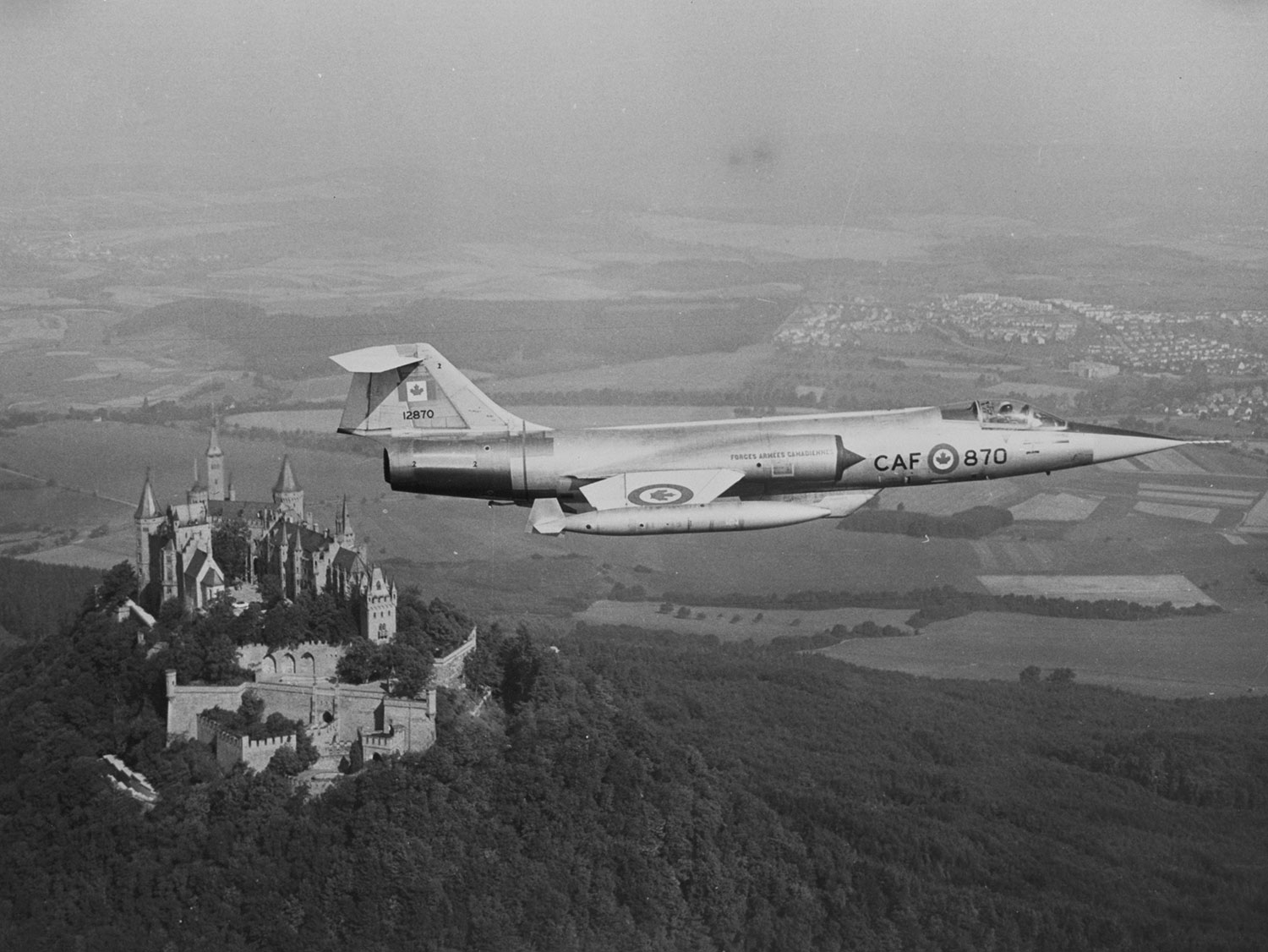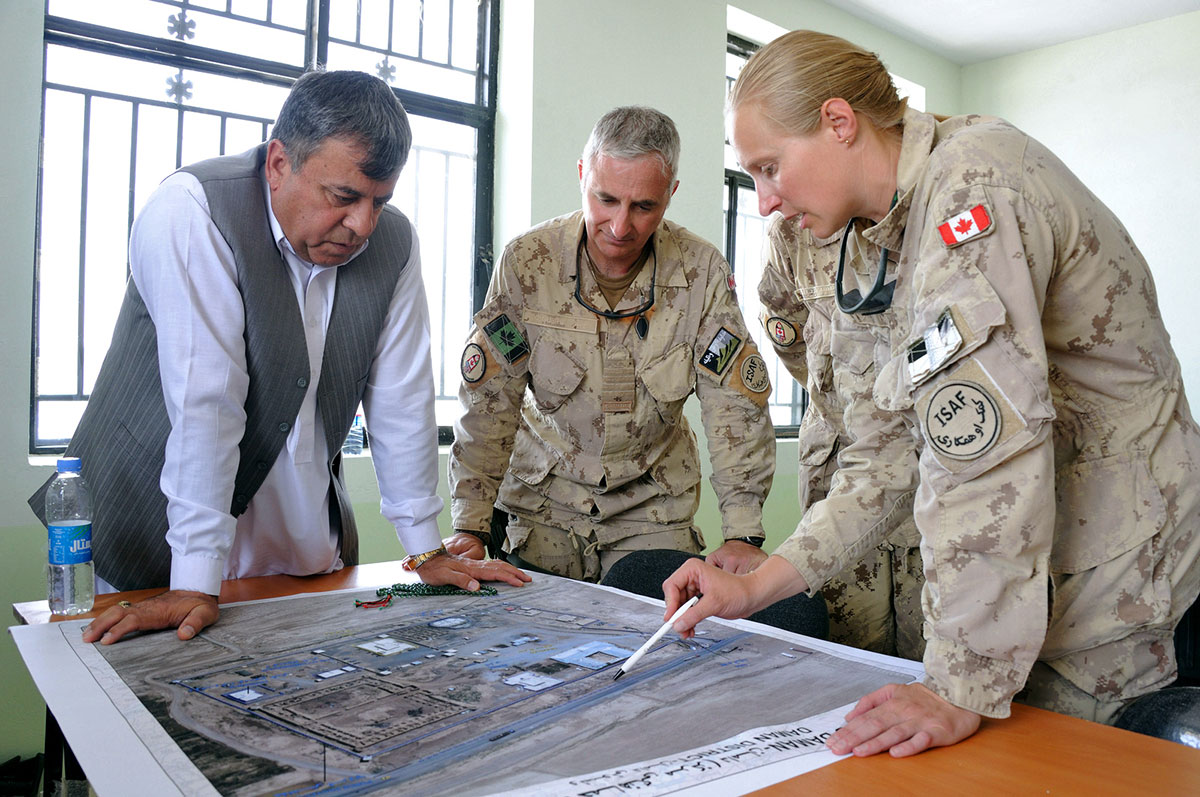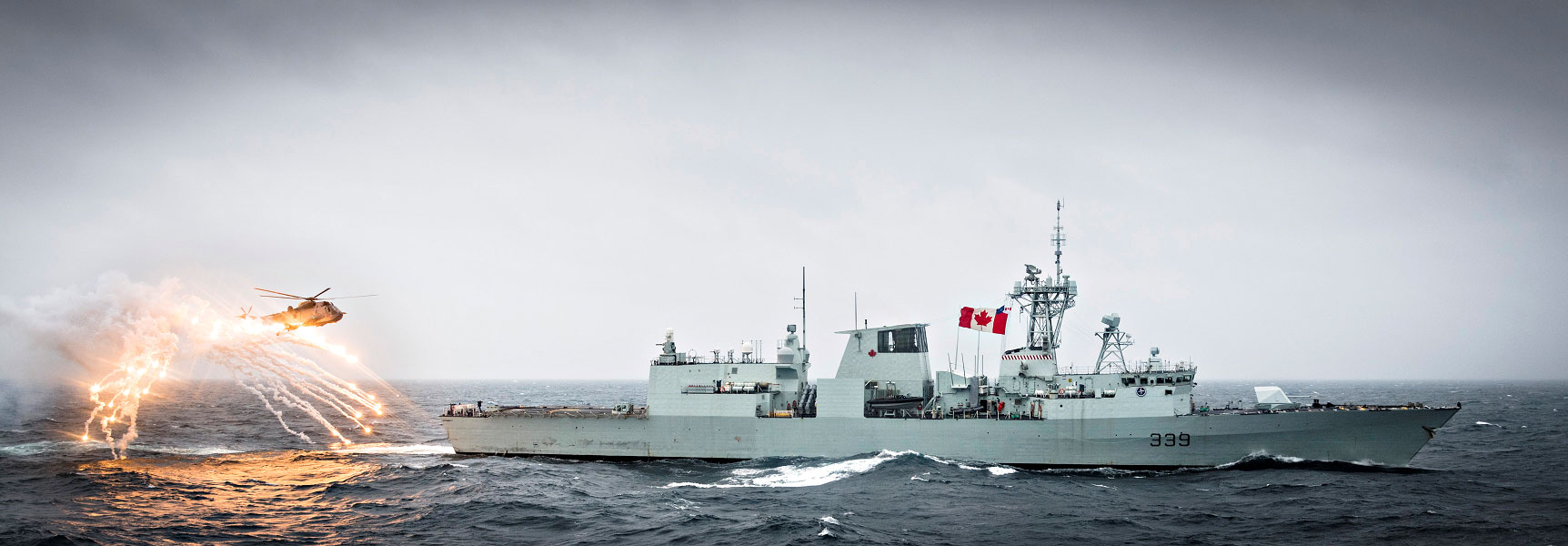Canada and the North Atlantic Treaty Organization - Historical sheet
This publication is available upon request in alternate formats.
PDF Version
One of the Canadian military’s central roles over the years has been to stand side-by-side with our allies to help defend international peace and security. The North Atlantic Treaty Organization (NATO) was established in 1949, and this important partnership has endured for decades in a world that has undergone many significant changes.
The Cold War
The origins of NATO date back to the tumultuous years that followed the end of the Second World War in 1945. While the Soviet Union had been a major Allied power during the conflict, tensions quickly arose between the communist Soviet regime—which sought to widen its global influence—and democratic nations of the west like the United States, United Kingdom, France and Canada.
The “iron curtain” soon descended across Central Europe as the nations that had been freed from German occupation by Soviet forces saw communist governments take power. The clashing ideologies of east and west uneasily faced one another across a heavily armed frontier. The development of highly destructive nuclear weapons during this period caused the stakes of a future conflict to rise exponentially. This decades-long international standoff spawned in the latter half of the 1940s came to be known as the Cold War.
The birth of NATO
The United Nations was established in 1945 but, despite the important role it would play in the international community, its power to curb the escalating Cold War was limited. Dramatic episodes, like the Berlin Blockade of 1948–1949, helped stoke the fires of distrust and the countries of Western Europe and North America increasingly felt the need to band together to try to counterbalance the communist threat.
NATO was established on April 4, 1949, with the signing of the North Atlantic Treaty in Washington, D.C. This political and military alliance was formed to protect the freedom of its citizens and uphold the principles of democracy and the rule of law. Canada played a prominent role in NATO’s creation and was one of its 12 charter members, along with the United States, United Kingdom, France, Belgium, Denmark, Iceland, Italy, Luxembourg, the Netherlands, Norway and Portugal.
Canada responds
Canada had greatly downsized its military immediately after the Second World War. However, the emergence of the Cold War and the outbreak of the Korean War in 1950 (which saw the communist forces of the north invade the democratic south) alarmed our government. Canada would soon recruit thousands of new soldiers, sailors and airmen to defend our own borders and also serve in Europe and on the Atlantic Ocean as part of NATO forces. Ultimately, hundreds of thousands of Canadians would take part in our country’s Cold War efforts between the late 1940s and the early 1990s.
On land
Our army’s first major Cold War deployment to Europe came in 1951 when the 27th Canadian Infantry Brigade was sent to Hanover, West Germany (relocating to the Soest region in 1953). An expanded Canadian brigade group was established later in the 1950s with additional armoured forces. Tanks played a central role in the NATO war plans and the Fulda Gap (lowlands between East and West Germany which were the likely route of a Soviet attack) would become familiar ground for Canadian troops. By the mid-1960s, the Canadian brigade group included three mechanized infantry battalions, a reconnaissance squadron equipped with both armoured vehicles and helicopters, artillery, and extensive logistical support capabilities.
The headquarters of Canada’s land forces in Western Europe moved to Lahr, West Germany, in the late 1960s, and there would be variations in our army’s size and capabilities overseas during the remainder of the Cold War. Through it all, though, our soldiers would bravely continue to serve until the end of the Cold War resulted in the Canadian brigade group being disbanded in 1993 and brought home.
In the air
The No. 1 Air Division Royal Canadian Air Force was established in Western Europe in the early 1950s. It initially consisted of 12 squadrons stationed at two bases in France (RCAF Station Marville and RCAF Station Grostenquin) and two bases in West Germany (RCAF Station Zweibrücken and RCAF Station Baden-Soellingen). Canadian warplanes there patrolled the skies with NATO forces, ready to intercept enemy bombers and fighters and to support ground forces in the event of active fighting breaking out. Canadian squadrons would be transferred out of France in the 1960s and our country’s air force presence in Europe soon concentrated at the newly constructed Canadian base in Lahr.
During the course of more than 40 years of NATO service, the organization and capabilities of our country’s overseas air power evolved, but iconic Cold War-era Canadian warplanes like the F-86 Sabre, CF-104 Starfighter and CF-18 Hornet became familiar sights in the skies over Europe.
Canada would also contribute in other ways to NATO air capabilities as our country was used for decades as a training ground for the air forces of our allies. With many European NATO member countries being relatively densely populated, Canada’s wide-open spaces were an attractive alternative.
At sea
The Canadian navy’s central responsibility during the Cold War was to patrol the Atlantic Ocean and defend against enemy naval forces. It was serious business as Soviet nuclear submarines could potentially use their stealth to reach the coast of North America and launch devastating missile attacks with little warning.
To hone their skills, Canadian warships joined the NATO fleet for regular exercises in the waters of the Atlantic Ocean and Mediterranean Sea. At times the constant threat of war would escalate even higher, such as during the Cuban Missile Crisis in October 1962. This Cold War confrontation over the presence of Soviet missiles in Cuba was perhaps the closest the world has come to an actual nuclear war. Canadian warships and aircraft would tirelessly patrol the Atlantic looking for Soviet naval activity during this tense episode.
Many Canadian naval Veterans recall their years of service at sea on such Cold War stalwarts as our Tribal-class destroyers and St. Laurent-class frigates, and aircraft carriers like HMCS Magnificent and Bonaventure. In the skies above, Sea King helicopters and long-range patrol aircraft, such as the Tracker, Argus and Aurora, patrolled the oceans on the watch for Soviet vessels probing our defences.
Post-Cold War efforts
The collapse of the Berlin Wall in 1989 was rapidly followed by the fall of communist regimes in the Soviet Union and Eastern Europe in the early 1990s. While the original purpose for NATO receded with the end of the Cold War, it would soon prove its continued relevance to international stability in new ways. NATO would coordinate a multinational security force in the Balkans in the aftermath of the strife that erupted following the break-up of Yugoslavia. Thousands of Canadian Armed Forces members would help restore peace and aid in the recovery there as part of NATO’s Implementation Force (IFOR) and Stabilization Force (SFOR) missions beginning in the mid-1990s.
NATO would assume a leading role in the international military efforts in Afghanistan in the aftermath of the September 11, 2001, terrorist attacks. More than 40,000 Canadian Armed Forces members served in the Afghanistan theatre of operations between 2001 and 2014 and most would do so as part of NATO’s International Security Assistance Force (ISAF). Canada’s navy and air force also took part in the NATO campaign to help the Libyan people depose dictator Muammar Gadhafi in 2011.
More recently, in a callback to the alliance’s original purpose, NATO has been resolute in standing up for peace and security in the face of new threats in Central and Eastern Europe. Canada’s army, navy and air force have taken part in NATO exercises as part of Operation Reassurance in places such as Poland, Latvia, Romania and the Black Sea. Our men and women in uniform are also active in important NATO initiatives elsewhere, such as playing a leading role in a training mission in Iraq to help the country transition to lasting peace and security.
Despite the many changes that have happened in the world since 1949, the principles underlying NATO are still strong and the size of the alliance has expanded greatly. Today there are 30 member nations, and Canada remains a key contributor even seven decades later.
Canada Remembers Program
The Canada Remembers Program of Veterans Affairs Canada encourages all Canadians to learn about the sacrifices and achievements made by those who have served—and continue to serve—during times of war and peace. As well, it invites Canadians to become involved in remembrance activities that will help preserve their legacy for future generations.
- Date modified:


